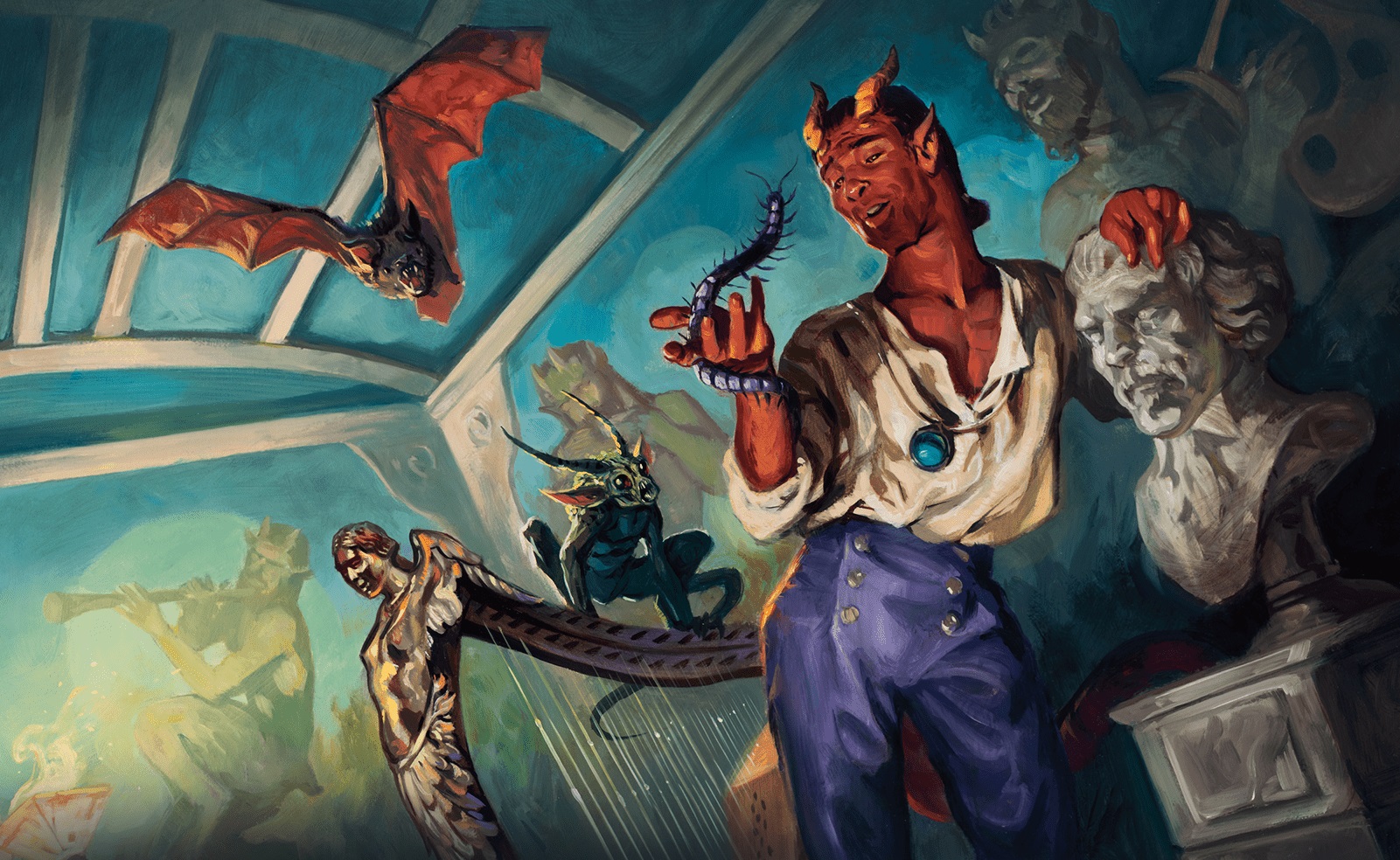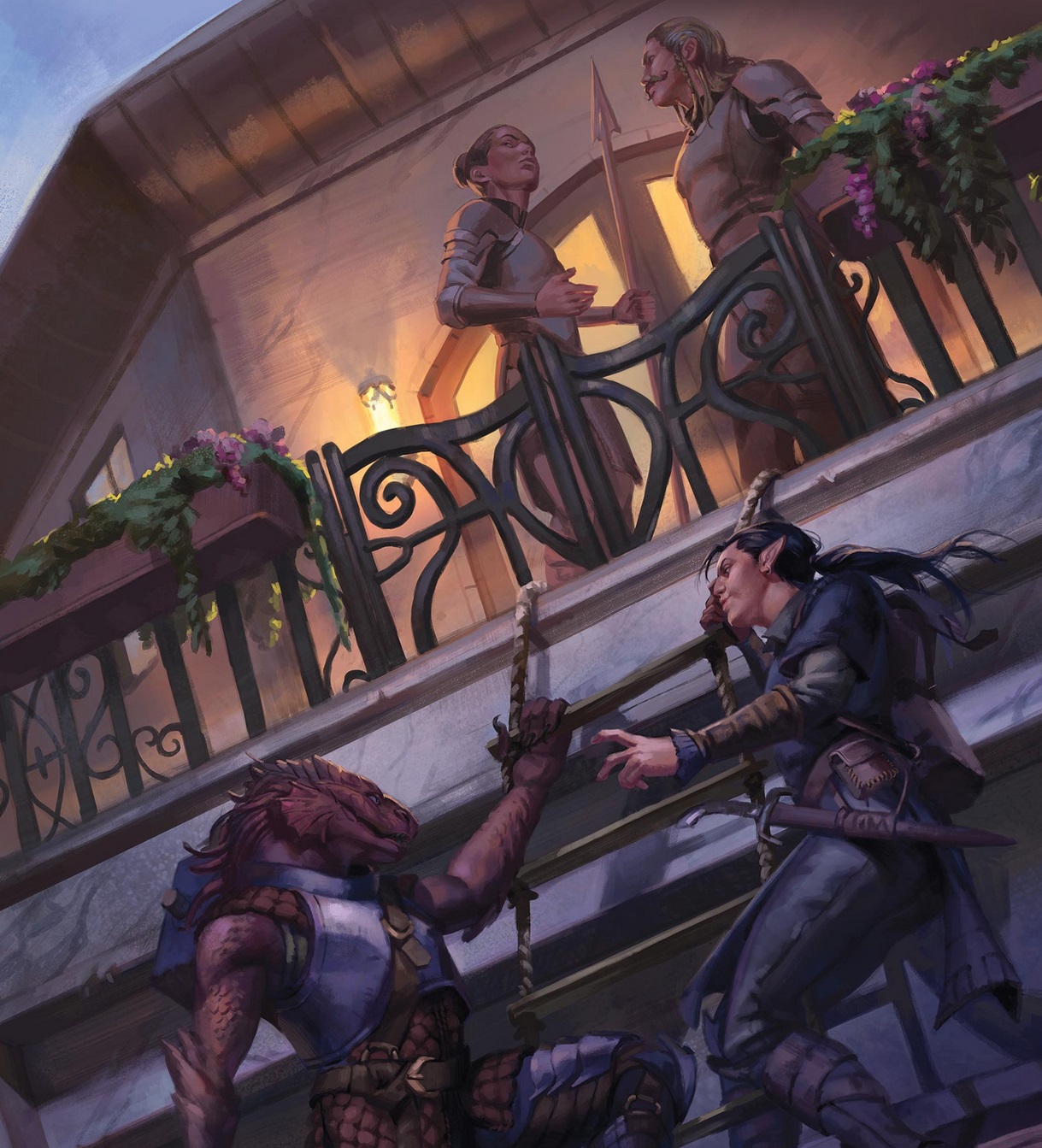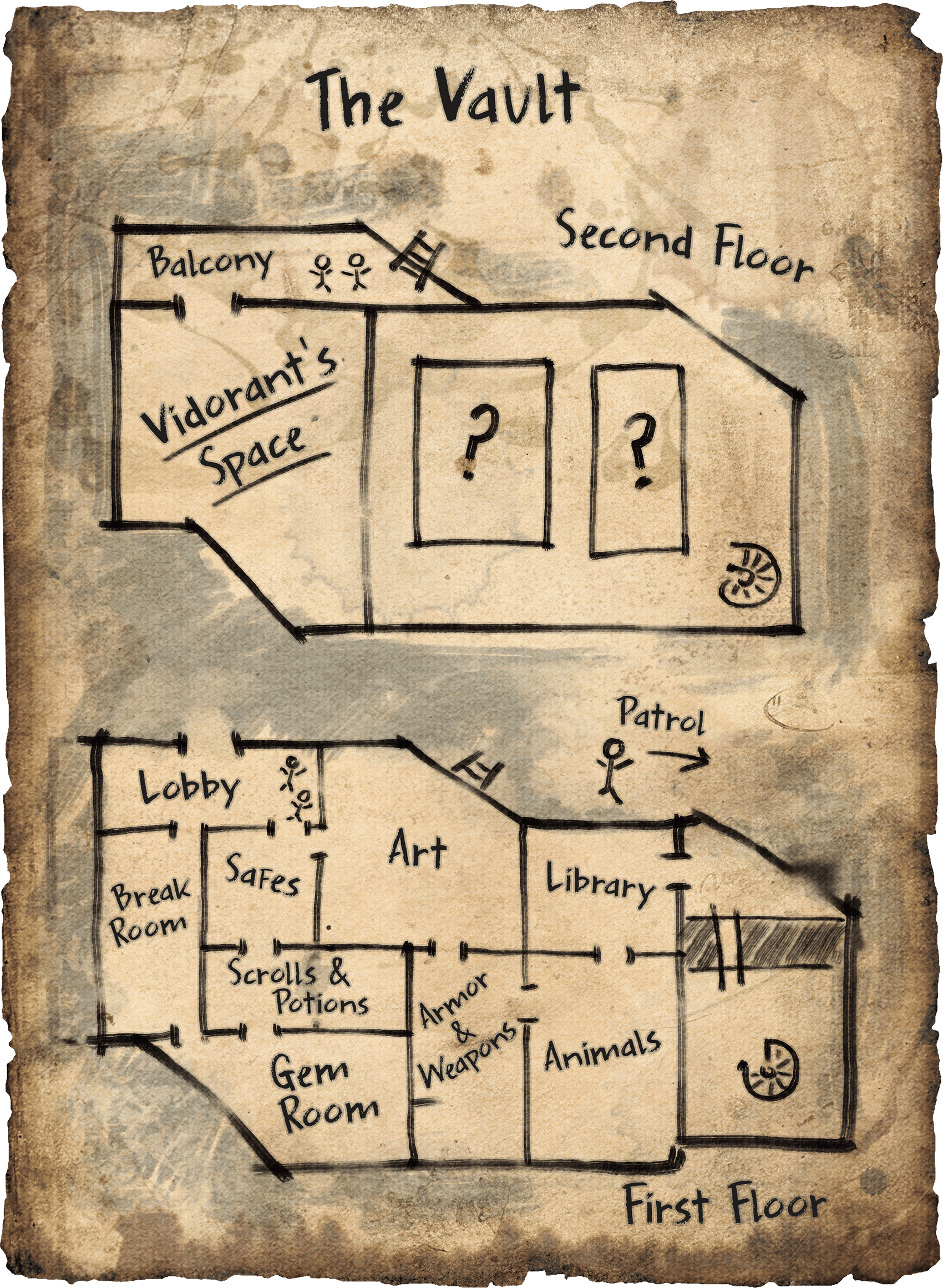How D&D Tackles Heists in ‘Keys From the Golden Vault’

Keys from the Golden Vault is an anthology of heists for D&D. But how does the game tackle heists? With a few new rules, here’s a look.
Dungeons & Dragons is a game of fantasy adventure and kicking in the door to loot some treasure. While you might play a cunning rogue, skulking about in shadows. Ultimately you’re a cunning rogue whose primary focus is dealing sneak attack damage.
This is worth keeping in mind if you happen to check out D&D’s latest book: Keys from the Golden Vault. It’s in “early access” right now because everything is video games these days. And time isn’t real anyway. But knowing what D&D is and isn’t designed to do, isn’t to disparage the game, but rather make you aware of what kind of work you’ve got ahead of you.
In the case of heists, that means designing adventures around the fact that player characters, in D&D, are largely blunt instruments who will strength and charisma their way through everything. Whether it’s with weapons, spells, or very high skill checks.
This is why there are a few new mechanics introduced in Keys from the Golden Vault to help make the tension of a heist feel a little more prevalent in the adventures. Notably, these mechanics aren’t present in every adventure. But if you’re sticking with D&D or games in that vein, you might find a few new tools to add to your toolbox.
Suspicion Level
The idea of a rising alert level isn’t a groundbreaking concept. But Keys from the Golden Vault uses the idea quite well in the adventure Prisoner 13. Over the course of this adventure, players are tasked with breaking into a high-security prison to get information from a prisoner.
And one of the best things this particular adventure does is introduce a consequence for being seen doing something suspicious that can’t be explained away. It’s a chance to focus on the “not combat” parts of D&D. At least for a little while.
Suspicion works on a level from 1 to 6. It starts at 1, and certain activities raise the suspicion level, such as:
- Talking to prisoners about anything unusual
- Getting caught by a patrol
- Casting a spell with perceptible components or effects within sight/earshot of a guard
This might be the first time a D&D adventure has ever cared about spell components. But it’s a good reminder that player characters are outside of their normal element. And as the suspicion level rises, security patrols become more frequent. Characters will find it harder to lie their way out of trouble. And more guards will become present.
Get the Suspicion level up high enough, and the prison goes into High Alert, which sounds warning alarms, makes guards reinforce certain areas, as well as granting them the ability to see invisibility. It’s a nice little consequence that the players can see coming. Suspicion adds just a touch of that Heist movie magic.
A Typical Day
Included in the adventure Axe from the Grave is a wonderful little side table that gives the players a ton of agency. The adventure revolves around stealing a certain axe from a bardic conservatory. And one of the best things about this adventure is the way it presents “a typical day.”
There’s a table that tells the DM and the players where any of the adventure’s many NPCs might be at any given hour of the day. This means players can decide to risk the crowds of daytime hours since they know where most people are likely to be or leaves it up to them to prowl at night.
And as the work is already done for the DM, they can focus on reacting to whatever plan the PCs have come up with now. It’s such a simple thing, but it makes the conservatory feel much more alive when the players approach it.
Recon
One of the hardest things to do in an RPG that’s entirely dependent on people who’ve come to the table with their characters, excited about the opportunity to just get in there and roll dice, is to get folks to take things a little slower.
Whether this comes in the form of wanting to kill what is clearly meant to be a recurring villain the first time you meet them. Or in terms of just scouting something and coming back instead of immediately proceeding to go in.
And in the adventure, Vidorant’s Vault, there’s a whole section dedicated to what exactly players can learn before they go on the heist. Bonus points, it lists multiple ways that characters can learn this information, as well as multiple things they might learn.
They can convince former guards, they can simply use stealth or magic to try and scout out the vault. All of these come with risks, but also many rewards, including learning passwords to bypass magical security, learning how to disable traps, the existence and location of secret doors, and even just where the guards are when they’re on duty.
That’s actually something every heist in Keys from the Golden Vault touches on at least a little bit. They provide “player maps” which are stripped-down versions of what the DM sees so that players can start figuring out their own plans.
Happy adventuring!










